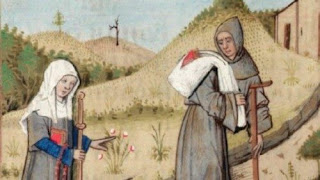He was a prolific author, and because of this he is credited with authorship of the earliest English translation of the Bible. Whether he was responsible for translating all of it from Latin into English, he may have been a driving force behind the work. (There are a couple other men whom scholars say would have been part of the translation project to spread his ideas.)
The followers of his ideas were later derogatorily called Lollards. He and they believed that there should be less hierarchy in a world where all men were created by God to be equal in His sight. Wycliffe questioned the legitimacy of a papacy, the importance of sacraments, and many policies of the Church.
Because he believed in the "democratization" of religion, he wanted a Bible that could be read by (or perhaps more commonly to) those who did not know Latin. Hence the Wycliffe Bible or Middle English Bible (MEB). Translations of the Vulgate (the 4th-century Latin version attributed to St. Jerome) appeared over the course of several years, starting near the end of Wycliffe's life through 1395. More manuscripts of the MEB exist from the Middle Ages than those of any other religious text. Not all are complete, and if you collate several manuscripts to include any material that exists in any of them, you have a very long work that includes material not generally found in a modern Bible. You can find a "complete" version here.**
Tomorrow I'll talk about the official attitude toward this Bible.
*In my second Chaucer novel that you see to the right, the young Geoffrey encounters him. (Balliol is also where Lord Peter Wimsey got a first in History.)
**I have currently finished a 100,000-word novel (and am 45,000 words into a sequel) about the lives of Jews who converted to Christianity and joined Henry III's Domus Conversorum. All quotations I use from the Bible—and there are many—are from Wycliffe.









